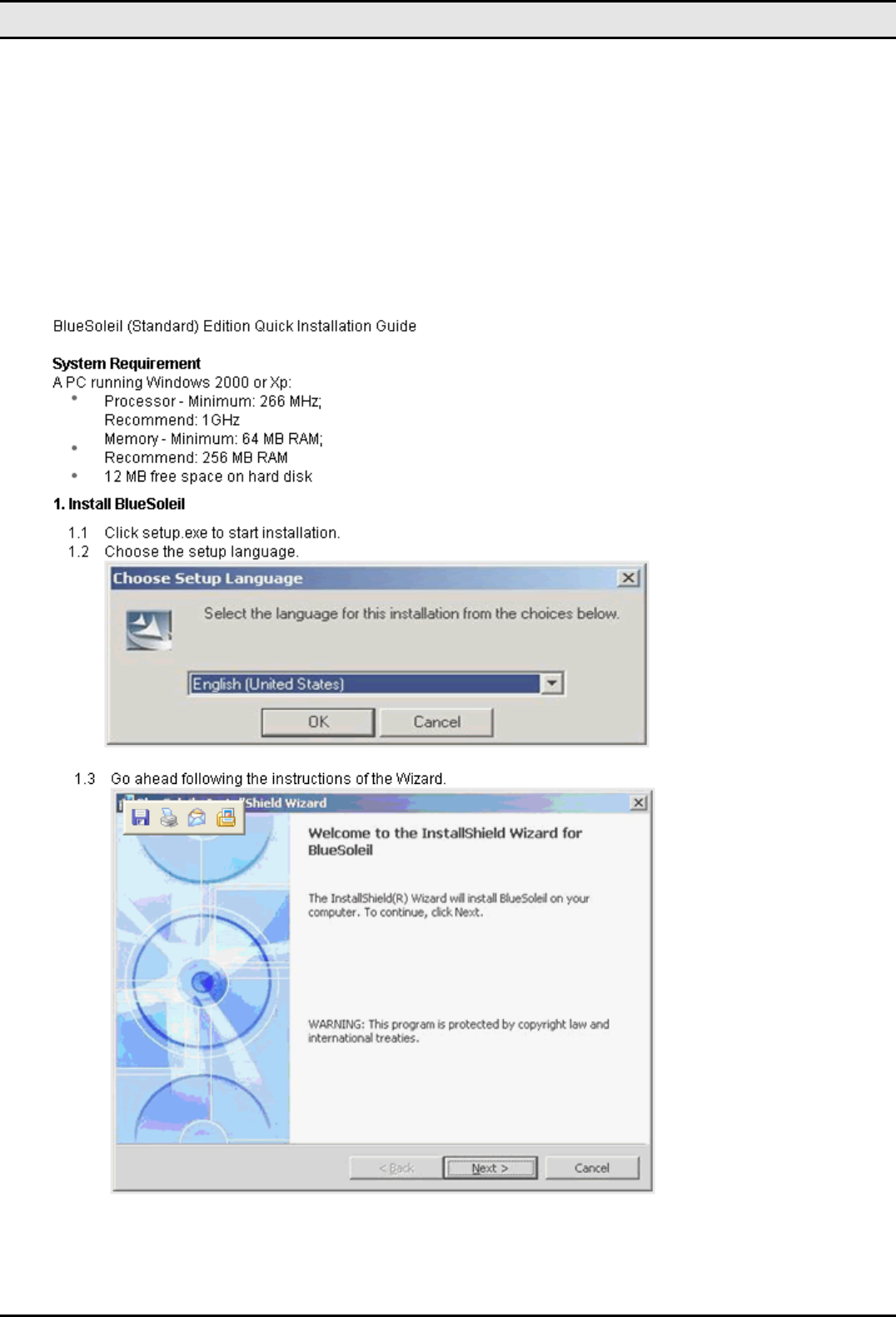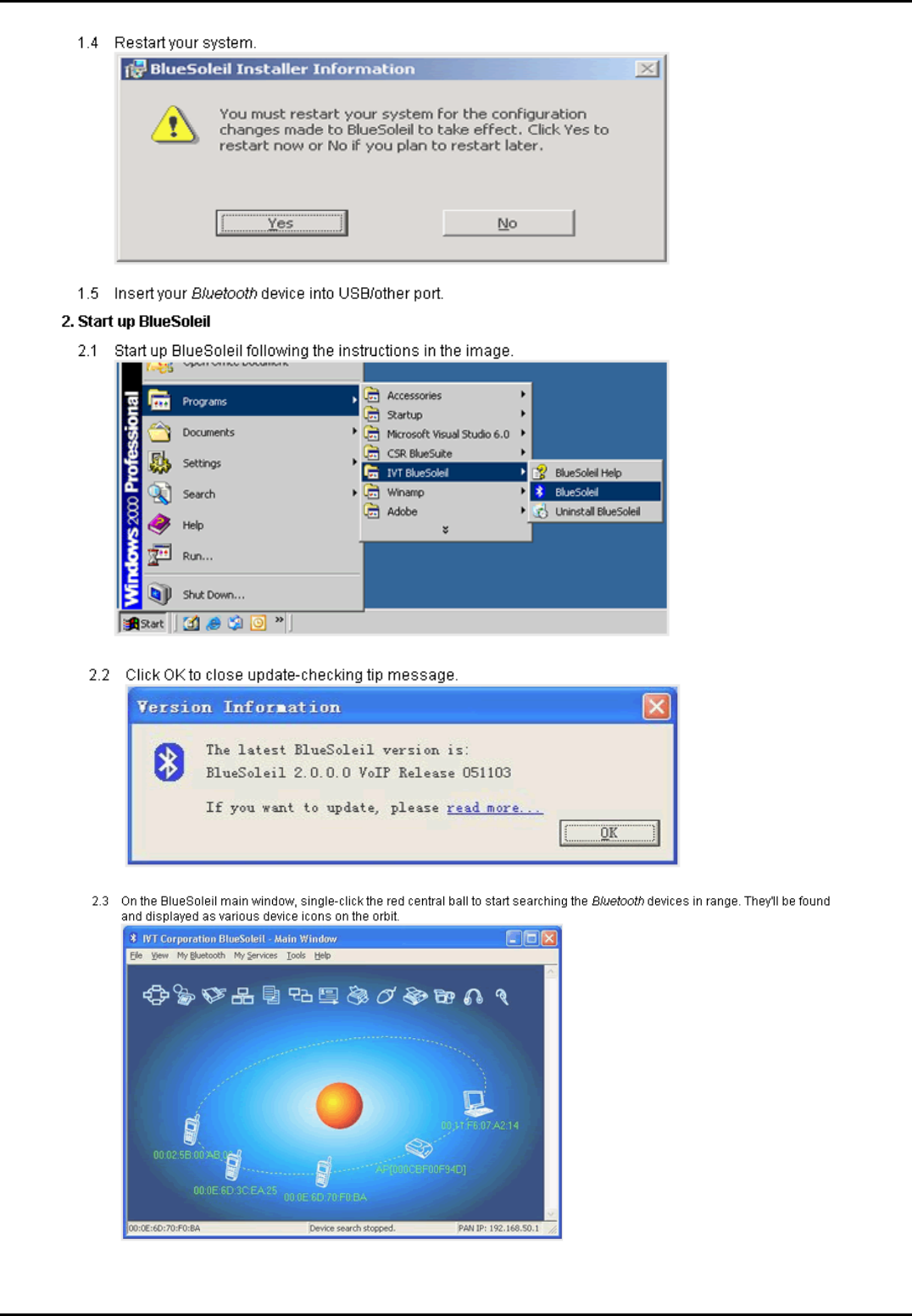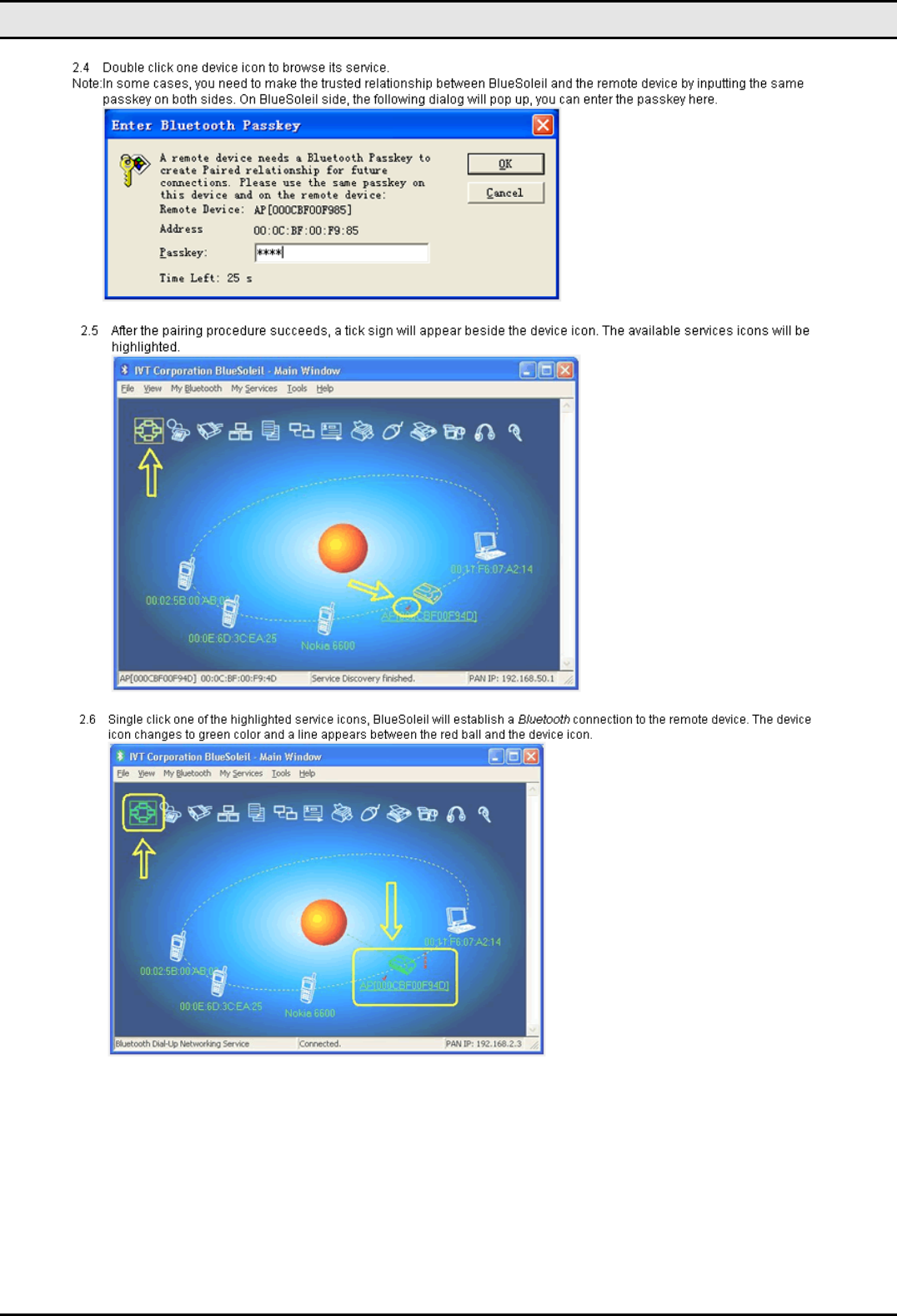CyberTAN Technology MM300C Bluetooth 2.0+ EDR Module User Manual manual
CyberTAN Technology Inc. Bluetooth 2.0+ EDR Module manual
manual

MM300-C / Bluetooth 2.0+ EDR Module
MM300-C
Bluetooth 2.0+ EDR Module
User Manual
Rev 0.1

MM300-C / Bluetooth 2.0+ EDR Module
National Communications Commission Interference Statement
This equipment includes wireless RF module, and must be labeled in a visible area with the following:
Contains NCC ID: XXXyyyLPDzzzz-x

MM300-C / Bluetooth 2.0+ EDR Module
ii
Table of contents
Introduction…………………………………………… 1
Install Bluetooth……………………………………… 2

MM300-C / Bluetooth 2.0+ EDR Module
1
Chapter 1
Introduction
Thank you for using the Bluetooth Module. The MM300-C is a Bluetooth adapter that works on Bluetooth
operation everywhere in the world. It is Bluetooth 2.0+ EDR. MM300-C can give users of laptops, note-
books, tablet PCs, and other mobile computing devices access anywhere in the world through any
Bluetooth network devices.
Able to provide Bluetooth real world throughput. The MM300-C provides the freedom to work as you
wish, wherever you wish, using whatever kind of Bluetooth application you wish to use. It is ready to
work “out of the box” in any embedded device or in any computer running Microsoft® Windows Vista, or
XP. The MM300-C Module is truly a “must-have” for every productivity-sensitive laptop, notebook, or tab-
let PC user and any bandwidth-sensitive embedded design.
Features and Benefits
• Seamless Wireless Connectivity
Bluetooth v2.0+EDR supports the use of most recent user-end devices.

MM300-C / Bluetooth 2.0+ EDR Module
2
Chapter 2
Install Bluetooth
MM300-C also support Bluetooth function. Below shows how to install Bluetooth device.
4.1 How to install Bluetooth device

3

MM300-C / Bluetooth 2.0+ EDR Module
4

5

MM300-C / Bluetooth 2.0+ EDR Module
6
Appendix A
1. Common Physical Layer Specifications
Table 1: Common Physical Layer Specifications
Operating Frequency 2402MHz to 2480MHz
Bluetooth Tx Power (Typical) 2±2dBm
Bluetooth Rx Sensitivity (typical) -42dBm
Carrier Spacing 1.0MHz
Channel 79
Duplexing TDD
Symbol Rate 1Mbps (GFSK)
2Mbps (π/4-DQPSK)
3Mbps (8DPSK)
Modulation Method GFSK BT = 0.5
?/4DQPSK
8DPSK
Reference Oscillator 26MHz (built in)
RF input and output impedance Nominal 50 ohm
Main Chip CSR BC41B143A
Dimensions 25.0 x 12.0 x 2.6 mm (typical)
GP Compliance Yes
FCC Notices
This device complies with Part 15 of the FCC Rules. Operation is subject to the following
two conditions: (1) this device may not cause harmful interference, and (2) this device
must accept any interference received, including interference that may cause undesired
operation.
CAUTION: Change or modification not expressly approved by the party responsible
for compliance could void the user’s authority to operate this equipment.
This equipment has been tested and found to comply with the limits for a Class B
digital device, pursuant to Part 15 of the FCC Rules. These limits are designed to provide
reasonable protection against harmful interference in a residential installation. This
equipment generates, uses and can radiate radio frequency energy and, if not installed
and used in accordance with the instructions, may cause harmful interference to radio
communications. However, there is no guarantee that interference will not occur in a
particular installation. If this equipment does cause harmful interference to radio or
television reception, which can be determined by turning the equipment off and on, the
user is encouraged to try to correct the interference by one or more of the following
measures:
--Reorient or relocate the receiving antenna.
--Increase the separation between the equipment and receiver.
--Connect the equipment into an outlet on a circuit different from that to which the receiver
is connected.
--Consult the dealer or an experienced radio/TV technician for help.
CAUTION:
Any changes or modifications not expressly approved by the grantee of this device could
void the user's authority to operate the equipment.
RF exposure warning:
This equipment must be installed and operated in accordance with provided instructions
and the antenna(s) used for this transmitter must be installed to provide a separation
distance of at least 20 cm from all persons and must not be co-located or operating in
conjunction with any other antenna or transmitter. End-users and installers must be
provide with antenna installation instructions and transmitter operating conditions for
satisfying RF exposure compliance."